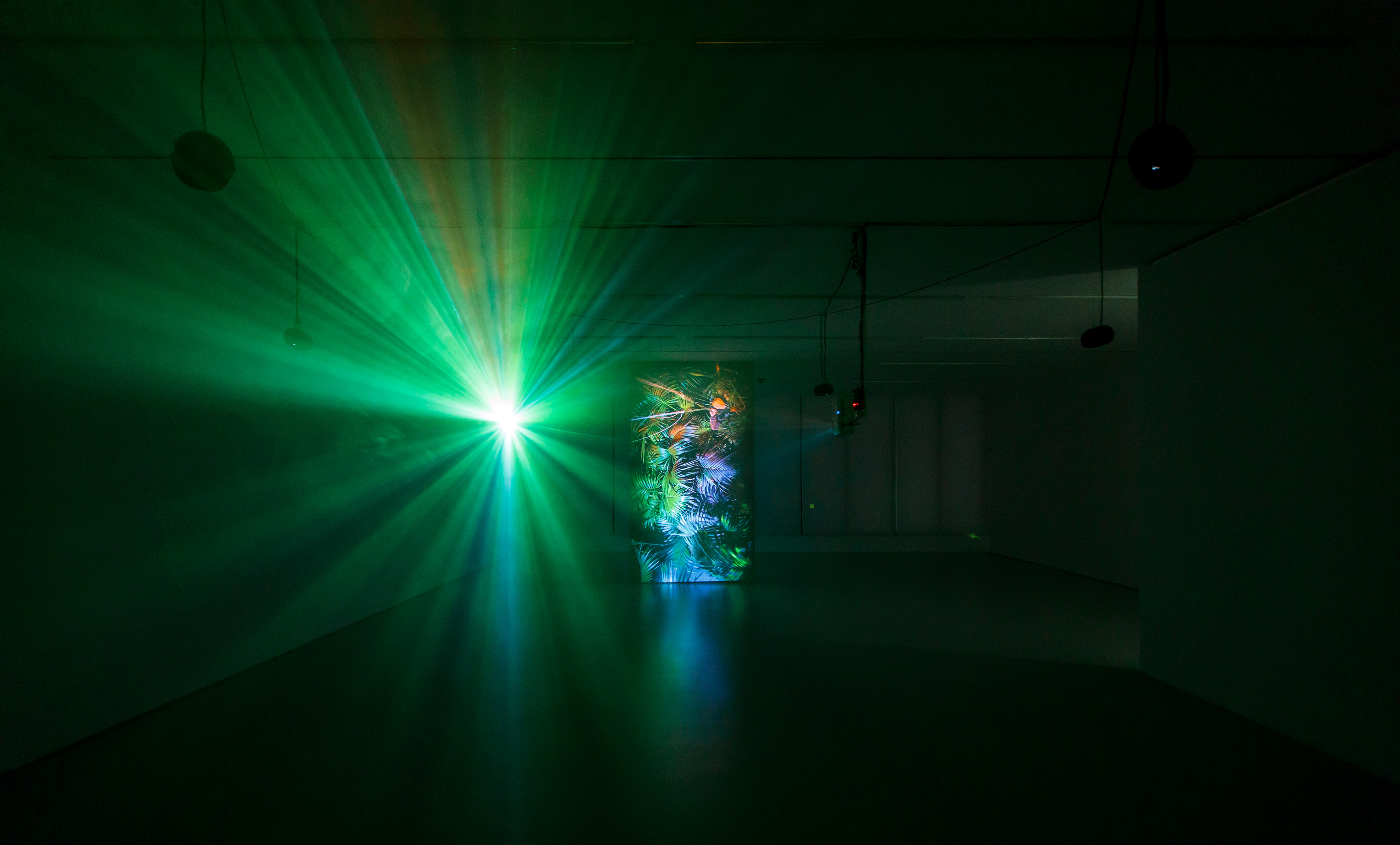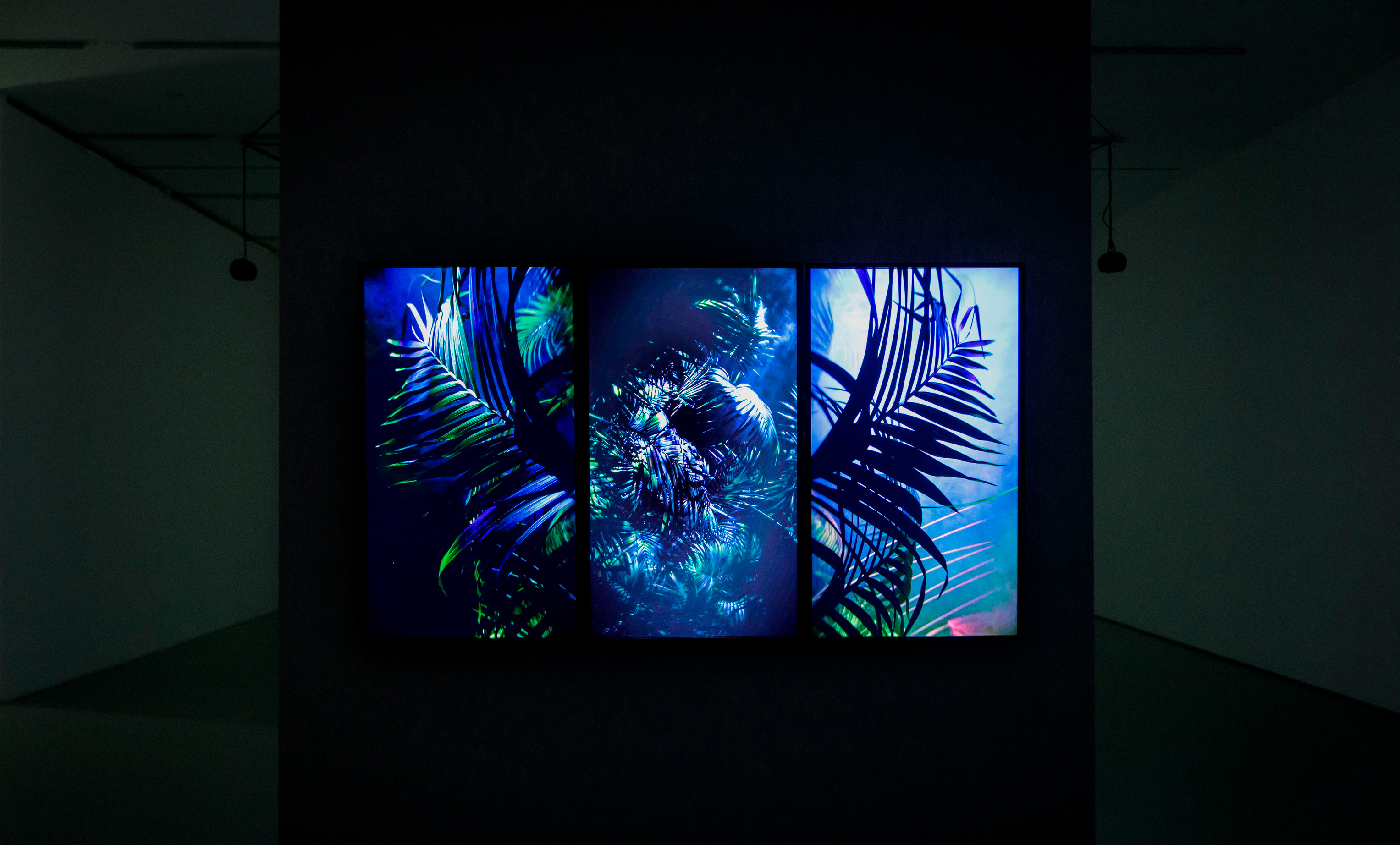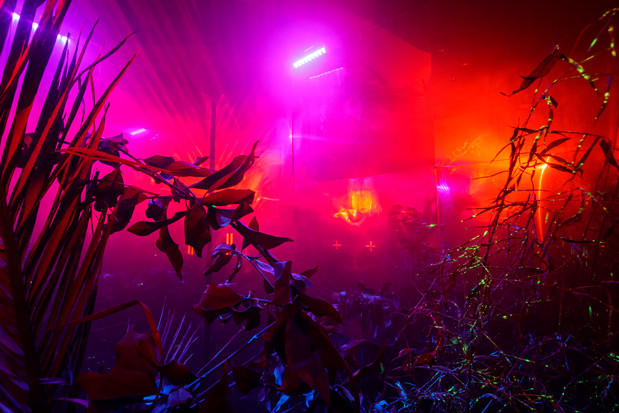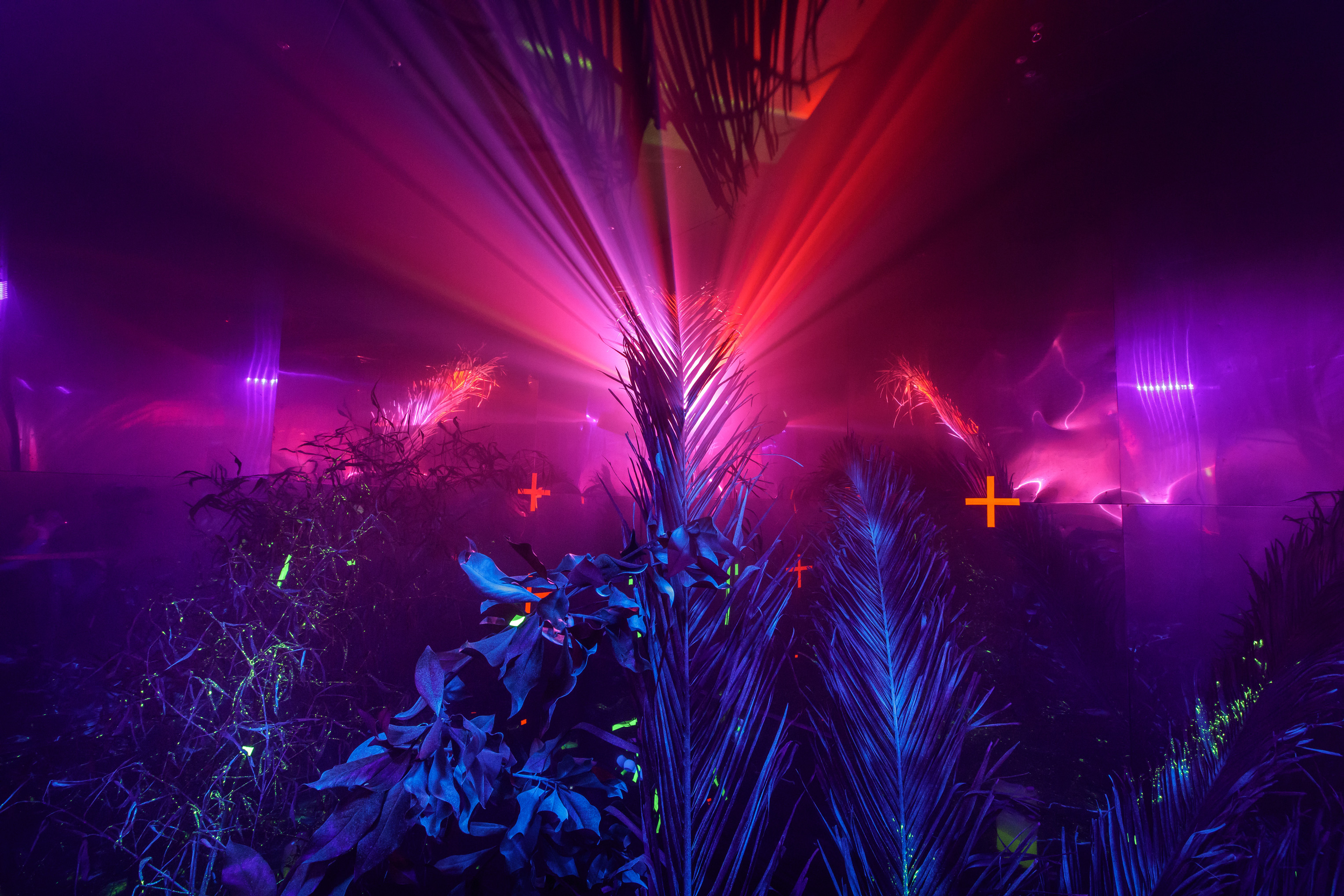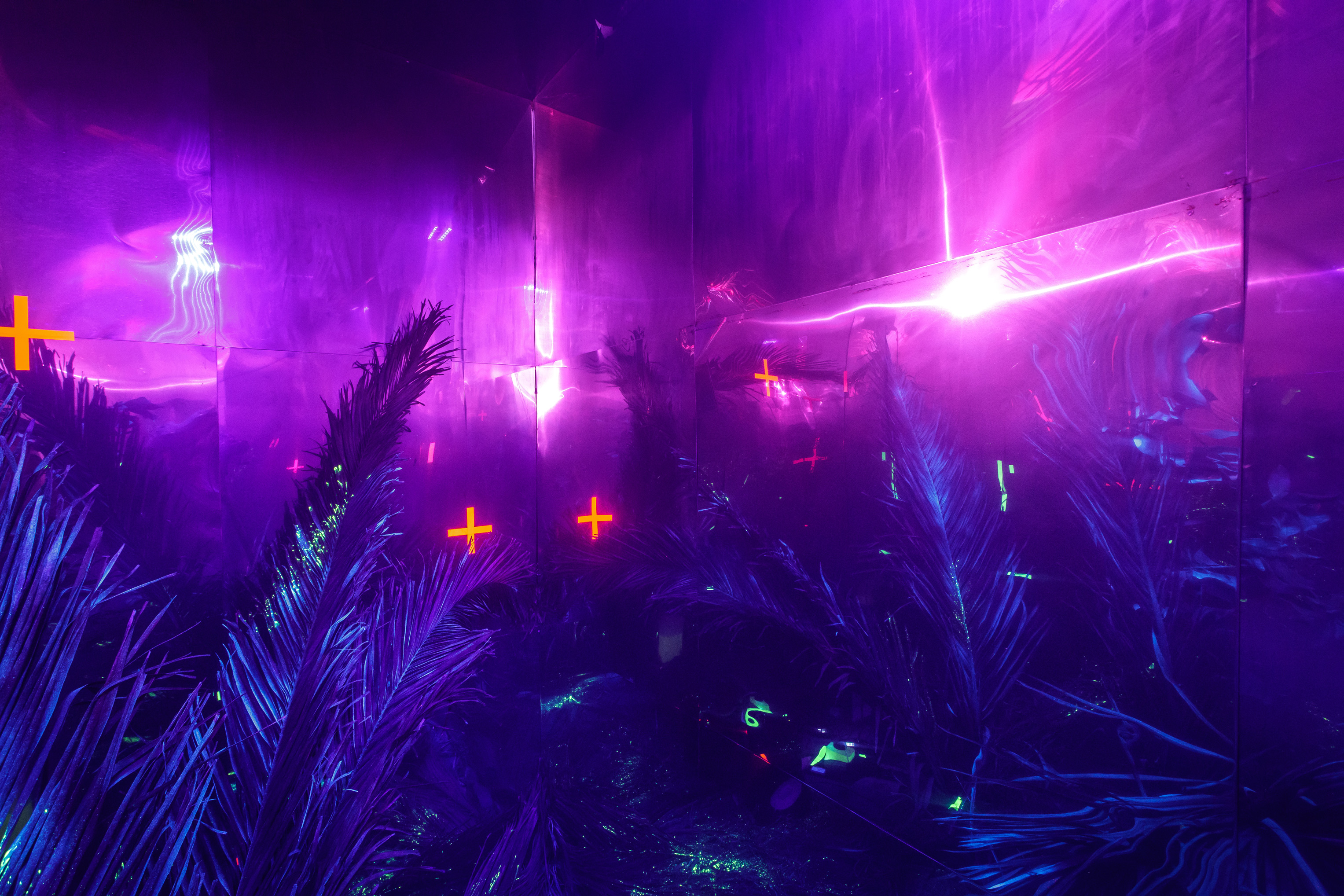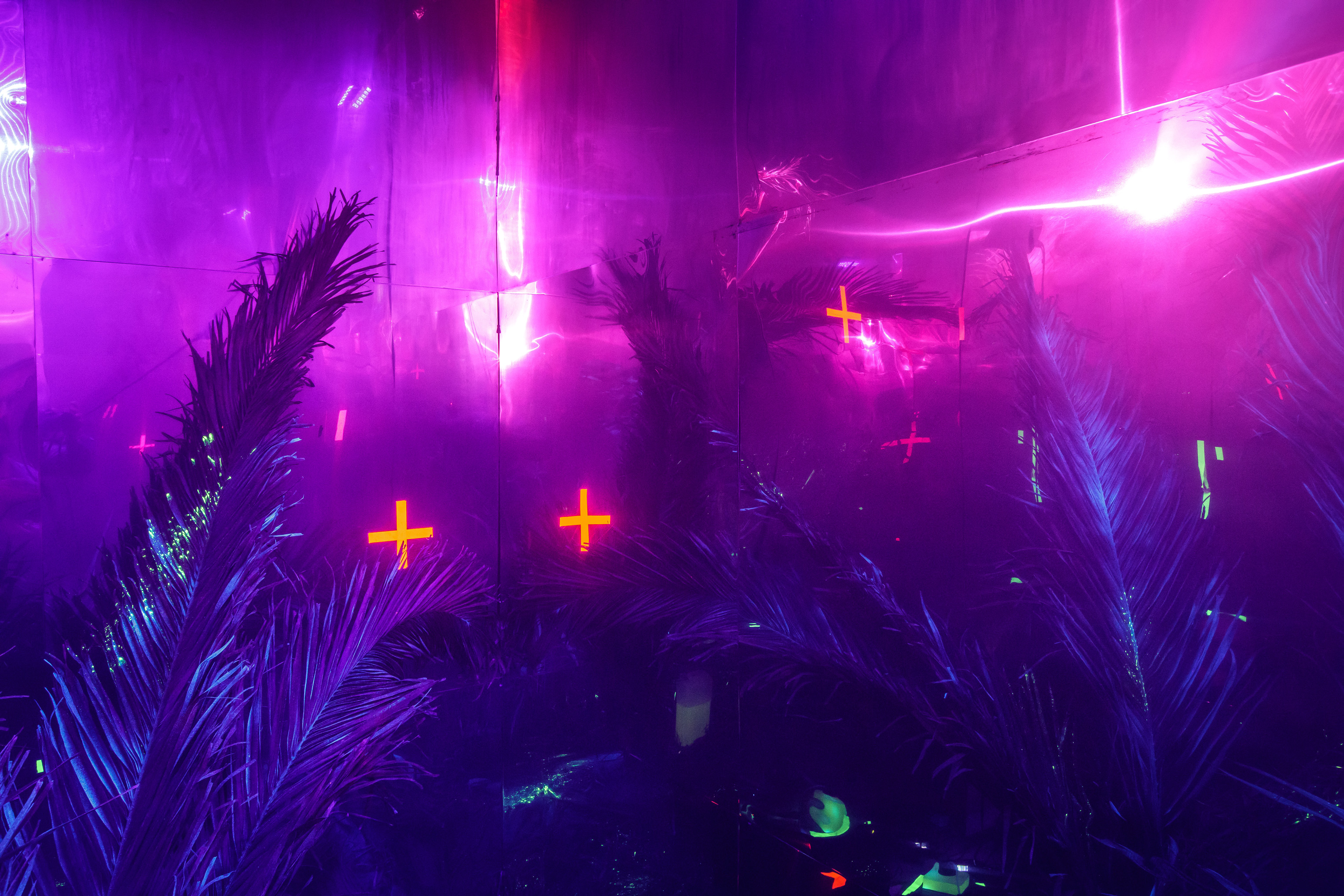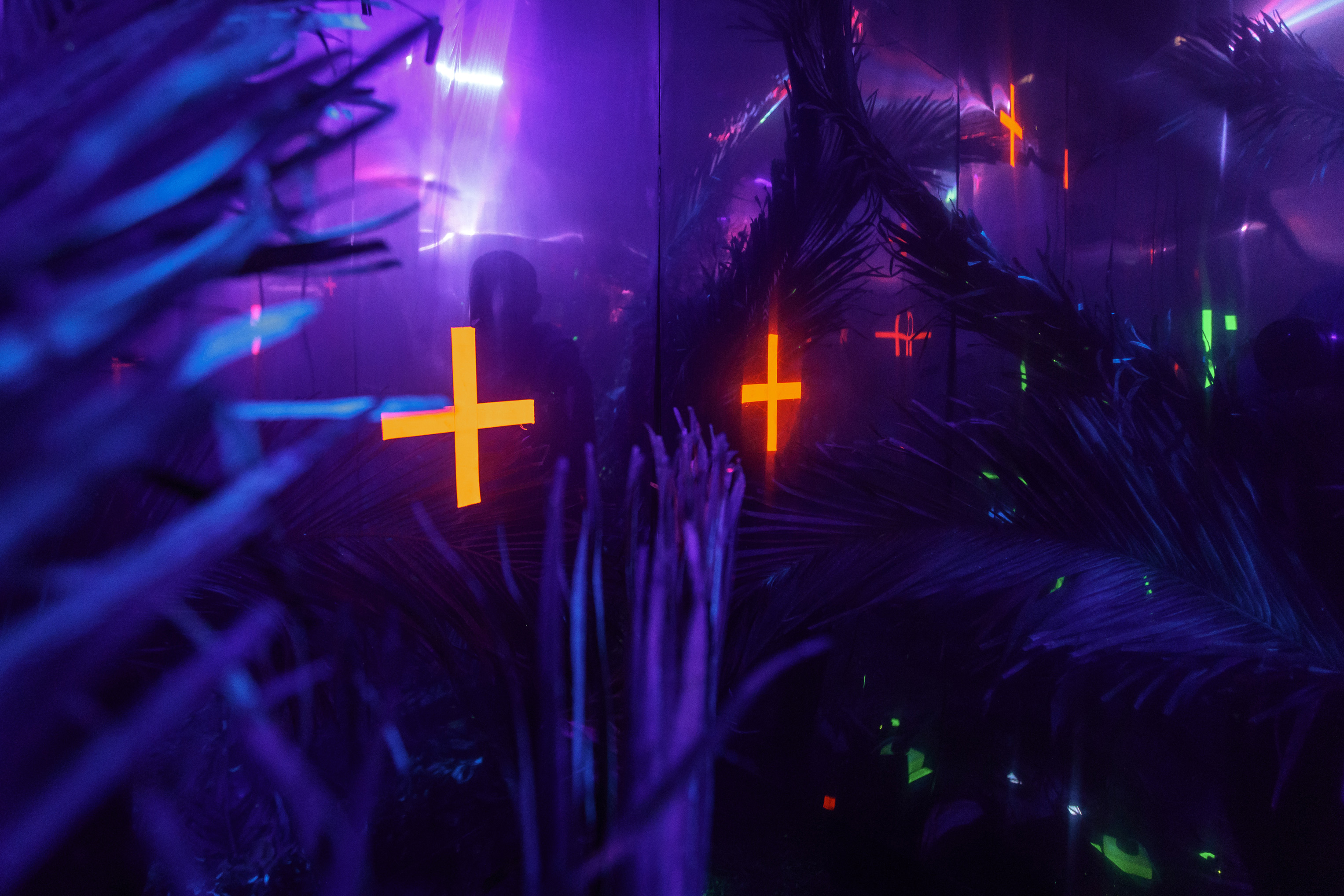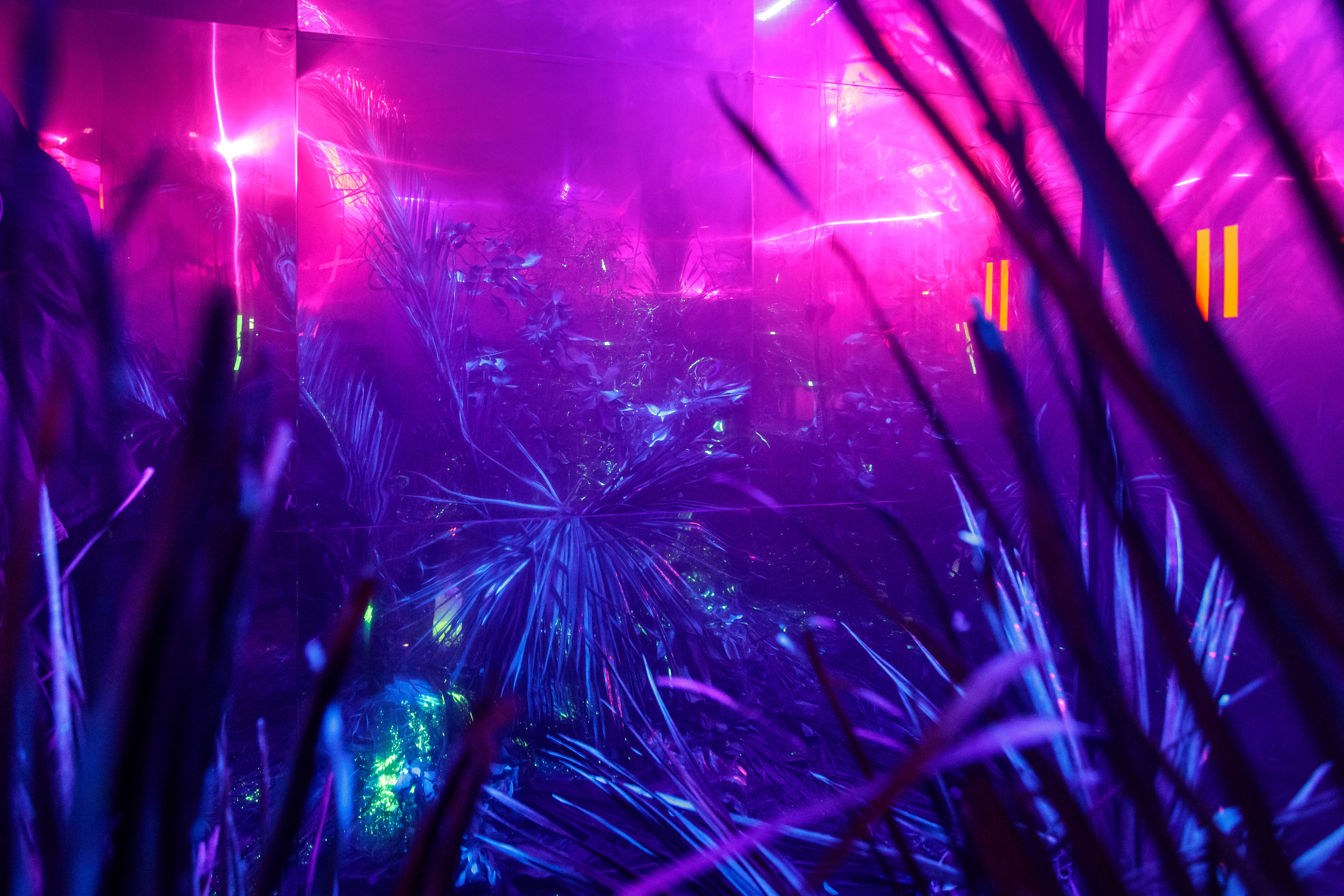Plague Vector
2019, 4 channel video, 8.1 sound installation, Shown at the Braga Municipal Gallery, curated by Duarte Sequeira.

A lone paratrooper fallen from the stars, trapped in the branches of a technicolor alien jungle. His radio, dislodged during the forced landing, alternates between hypnotic static sounds mixed with a set of recordings of his voice describing a dangerous landscape on the brink of collapse: an environment toppled by the toxicity of the relationship between man
and nature. The parachutist — suspended in mid-air, immobilized by the web of his aeronautical device entangled in the wild — floats between various states of reality and consciousness. Each time he begins to fall asleep, the radio plays a new soliloquy describing the minute details of this poisonous landscape; and each time, the skydiver responds with the same monosyllabic message: “eco...” As an investigation into feedback and hybrid artificial/natural systems, the piece represents the artist’s exploration of the relationships between humans, spaces, repetitions, and forces that unite them.
For his solo exhibition at Arte Forum Braga, Jonathan Uliel Saldanha presents a new immersive installation for his video work Plague Vector. In one room, Saldanha has created an elaborate artificial crystal jungle with colored lights, smoke, mirror and sound. In the main gallery space is displayed a multi-channel video installation using electronic screens and projection.
Plague Vector is one episode in a longer film project that the artist has been developing since 2015. The video depicts a lone parachutist fallen from the stars, caught in the branches of an alien technicolor jungle. His radio, dislodged during the crash landing, alternates between hypnotic static sounds intermixed with a set of recordings of his voice describing a perilous landscape on the brink of collapse: an environment brought to its knees by the toxicity of the relationship between man and nature. The parachutist—suspended in the air, immobilized by the web of his man-made aeronautics contraption entangled in the wild environment—drifts between various states of reality and consciousness. Each time he begins to nod off, the radio pipes up with a new soliloquy describing the minute details of this poisonous landscape; and, each time, the parachutist responds with the same monosyllabic message: “echo…”
As an investigation into feedback loops and hybrid artificial/natural systems, the piece represents Saldanha’s larger exploration of the relationships between humans, spaces, repetitions, and the forces that bind them together—for better or for worse. The work specifically recalls the Greek myth of Narcissus. The story goes that one day, the beautiful nymph Echo comes across Narcissus climbing in the mountains alone and separated from his companions.
Sensing someone near, Narcissus calls out to her, only for Echo to repeat his words back to him. Frustrated, Narcissus flees. After rejecting Echo’s advances, the nymphs curse Narcissus to fall in love and meet no affection in return. As a result, Narcissus falls in love with his image, reflected back to him in a pool of water. He dies there, trapped in the gaze of his own reflection.
One of Saldanha’s major sources of inspiration is J. G. Ballard’s science fiction classic, The Crystal World (1966). In the book, a doctor makes his way through a savage jungle to a remote treatment facility. Along the treacherous route, the doctor uncovers a strange and apocalyptic force that turns everything in proximity to hard, shiny crystal. When living things become trapped in the crystal, they become suspended in a liminal state of existence outside of time and the regular cycles of life. This crystallizing phenomenon is like man himself, who strives to subdue time and decay to preserve and procreate to the extent of his pleasure and the detriment of the world.
In his own crystal jungle, Saldanha’s parachutist is also suspended in a liminal state. Caught in an endless loop, the man is bound in a state a limbo caused by the forces of both man and nature working against each other. The vanity of man, who thinks himself capable of circumnavigating inescapable forces of nature, like gravity, has left the parachutist trapped—just as Narcissus was trapped by the gaze of his own reflection. The work is a larger metaphor for the antagonistic tension between man and nature, and the technologies of society that have degraded the environment and led to a state of climate emergency. As carbon levels rise and the man-driven forces of production geminate, capitalist systems propagate themselves and the toxic feedback loop reiterates.
